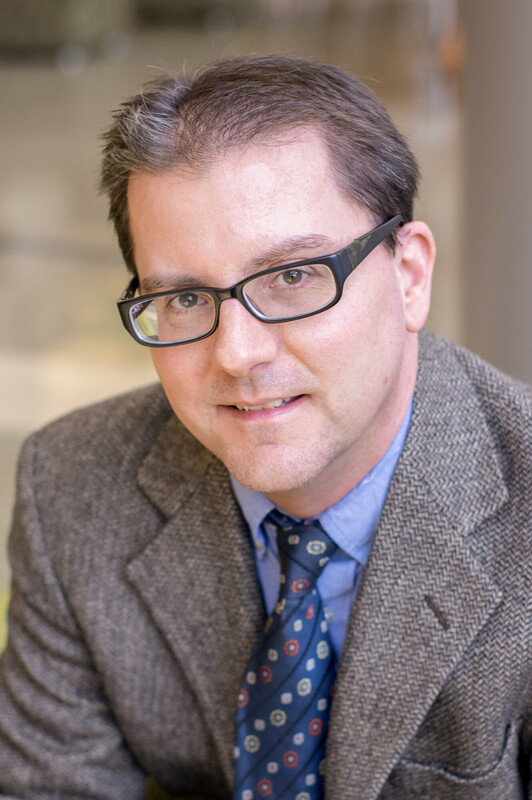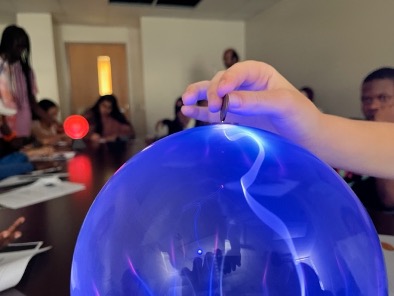On July 18th, The University of Alabama at Birmingham hosted an outreach event titled "The Exciting World of Plasma." The event was only possible thanks to Dr. Aaron Catledge, Associate Professor at UAB and CPU2AL investigator. Dr. Catledge, a past recipient of CPU2AL Seed Funding, utilized the competitive yearly funding to remarkable effect. The seed funding was derived from the $20 million NSF EPSCoR grant, "Connecting the Plasma Universe to Plasma Technology in Alabama," led by The University of Alabama in Huntsville. His subsequent achievement was securing an NSF-funded grant titled "New Frontiers in Synthesis of High-Entropy Transition Metal Borides Enabled by Microwave-Induced Plasma," where he serves as the principal investigator. This achievement was a direct result of his initial CPU2AL seed grant.
 Seed Funding Sparks Innovation
Seed Funding Sparks Innovation
“The CPU2AL seed funding provided the resources to allow a somewhat high risk/high impact idea to be investigated and further tested. It led to generation of convincing data used in the preparation of an NSF single-investigator grant that was subsequently awarded. Since then, my research focus has largely taken a new direction that has led to further inspiration and new ideas,” says Dr. Catledge. As a result of his newly awarded grant, Catledge is now also closely working with UAB’s Center for Community Outreach Development (CORD).
Fueling Curiosity: Dr. Catledge's Plasma Science Outreach Initiative
With the assistance of UAB graduate students, Dr. Catledge organized an outreach event geared towards 7th and 8th graders from local Birmingham city schools. With this event, Catledge hoped to spark the curiosity of a younger generation about the nature of plasma science. He hopes that children will find inspiration to explore further about the world they live in and discover ways they can contribute to shaping society.
The event drew 28 students who were introduced to the foundational aspects of plasma science. Divided into four groups, the students engaged in hands-on activities. The activities ranged from exploring the properties of a plasma ball to observing the generation of plasma through microwaves using hydrogen, argon, and nitrogen gases. “The students were first enlightened about what plasma really is, where it occurs in nature (and created in the lab), and why it is so important to modern-day science/technology,” says Dr. Catledge.
 The result? Many students were amazed by the way an "invisible field" could make a fluorescent bulb glow just by being close to the plasma globe. Some were captivated by the concept of creating a diamond film with plasma and then examining its surface using an atomic force microscope to study its topography. The goal was to install these fundamental concepts in an ‘eye-catching’ way by demonstrating modern tools in the lab, and Dr. Catledge and his team undoubtedly succeeded in accomplishing this through the event. This event not only highlighted the fascinating world of plasma science but also nurtured scientific curiosity among the younger generation.
The result? Many students were amazed by the way an "invisible field" could make a fluorescent bulb glow just by being close to the plasma globe. Some were captivated by the concept of creating a diamond film with plasma and then examining its surface using an atomic force microscope to study its topography. The goal was to install these fundamental concepts in an ‘eye-catching’ way by demonstrating modern tools in the lab, and Dr. Catledge and his team undoubtedly succeeded in accomplishing this through the event. This event not only highlighted the fascinating world of plasma science but also nurtured scientific curiosity among the younger generation.
Bridging Science and Society
“Scientists have the responsibility to act as ambassadors to the general public, charged with tasks ranging from educating the next generation of scientists to engaging in and shaping science policy. By reaching out, spreading the word, and conveying the excitement of science through events like this, more and more people are influenced and can cause change for the betterment of society,” says Catledge. He says that his past scientific mentors made a remarkable and lasting impression, and he hopes that his outreach contribution will also inspire and impact future generations.